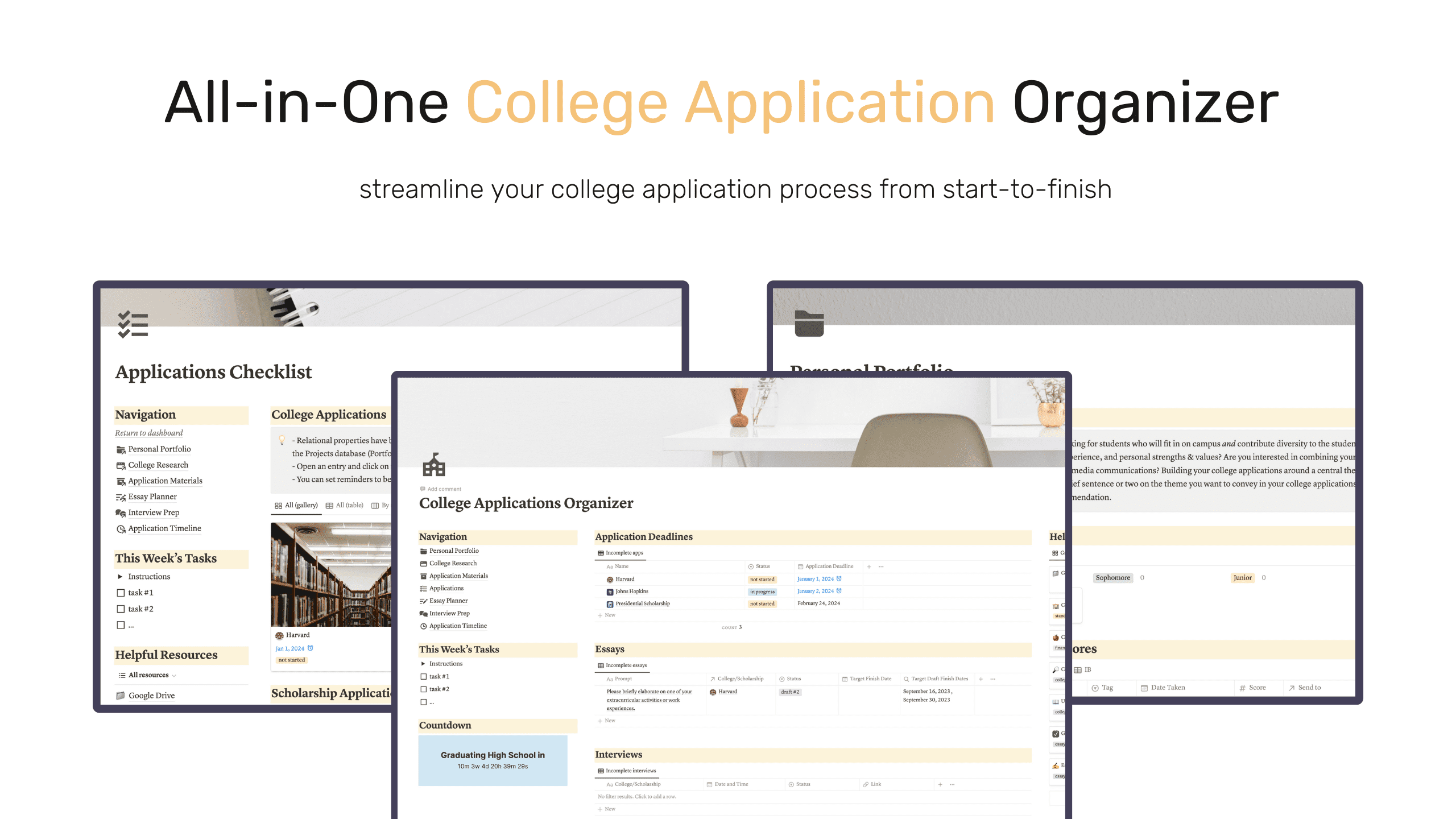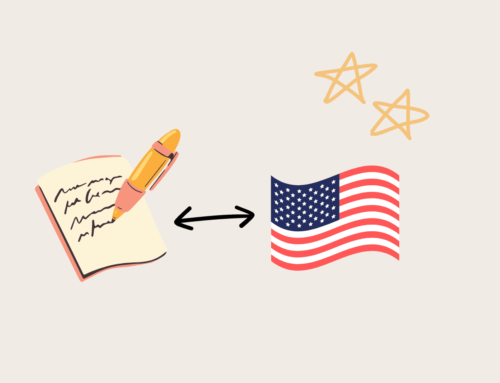
As college applications approach, you’re probably feeling stressed and overwhelmed. You’ve been inundated with tasks like building a college list, creating a cohesive application theme, and searching for scholarships, to name a few. On top of that, you still have to stay on top of schoolwork and extracurriculars, or admissions officers will think you started slacking.
In short, you don’t know how you’re going to handle all the endless deadlines and responsibilities. I was in a similar place in high school—confused about how to juggle all the components of the college application process while keeping up with my classes.
Having completed the college application process a short while ago, however, I’m now familiar with all the elements involved. I’m now aware of things I should have started preparing for earlier, as well as how I could have better streamlined and organized my responsibilities.
In this article, I’ll be covering 14 must-do things to prepare for college applications as a high school junior/senior. Since I know how overwhelming the college application process can be, I’ve also created a comprehensive college application planner that will make sure you address all 14 action items.
Let’s dive in!
#1: Create a College List
You should begin building your college list in junior year and finalize it at the beginning of your senior year. Here’s how you should go about building a college list:
Start Research on the Internet
Plenty of websites offer tools for streamlining college research, including:
- Big Future is run by College Board and provides various tools to help with college planning. These include tools for matching colleges to your profile, guidance on selecting majors, and information on financial aid and scholarships.
- Unigo offers college reviews, rankings, and insights from current and former students. Like Big Future, it also provides information on financial aid and scholarships.
- You probably already have a Naviance account associated with your school. Naviance is a good tool for college research and career exploration. Plus, it provides stats on past acceptances at your school, which may be helpful in determining whether a specific college is a safety, match, or reach school for you.
- U.S. News & World Report ranks colleges and universities based on various factors such as academic reputation, graduation rates, and faculty resources. It may help you in finding colleges with strong programs in what you’re planning to study.
As you’re doing research, explore various majors, programs, and extracurricular activities offered by different institutions. You should choose schools whose offerings resonate with your academic and personal interests.
Also, consider practical factors like distance, estimated tuition, and the average GPA and standardized test scores of admitted applicants.
Attend Live Events
Once you’ve created a list of colleges you’re interested in, it’s time to delve deeper into them. Your high school will likely provide an in-person or virtual college fair, which you should absolutely attend. It’s a fantastic opportunity to speak with representatives from colleges and learn more about the academic and extracurricular opportunities, as well as campus culture.
You should also schedule information sessions and/or virtual tours to gather additional information about schools you’re interested in.

Categorize Colleges
Your college list should be “diamond-shaped,” meaning that you choose mostly match schools with a few schools in the safety and reach ranges.
A match school is one where your academic qualifications and achievements align well with the average admitted student profile. Based on your profile, you should have a reasonable chance of admission.
A safety school is one where your academic qualifications and achievements typically exceed the average admitted student profile. Based on your profile, you should have a high probability of admission.
A reach school is one where your academic qualifications and achievements fall below or at the lower end of the average admitted student profile. Such an institution is highly competitive and often has a low acceptance rate and high academic standards. Even with strong qualifications, you should be aware that admission to reach schools is uncertain, so it’s always important to apply to some match and safety schools.
#2: Do College Visits
Doing college visits will help you learn more about the schools you’re interested in attending. If possible, you should schedule in-person college visits during your junior year or in the summer before your senior year.
It’s a great opportunity to get a more immersive experience of campus culture and connect with current students or alumni.
#3: Build a Strong Academic Profile
In your junior and senior years, you should take challenging courses that demonstrate your academic abilities and interests. In high school, you should always strive to increase the rigor of your courseload with each successive year. For instance, if you take 2 AP classes in sophomore year, strive to take 4 in junior year, then 5 or 6 in senior year.
It’s a common misconception that colleges don’t value senior year coursework and grades as much. Admissions officers do look at your senior year performance, and in fact, colleges will request your first-semester grades. If you’re accepted, they’ll also request your second-semester grades and may revoke your acceptance if you let your grades slip subpar.
Therefore, it’s essential to maintain your GPA throughout your junior and senior years. You should also seek guidance from teachers and counselors to select courses that A) align with your career aspirations and B) are of sufficient rigor for the colleges you intend to apply to.
#4: Take Standardized Tests
Many colleges no longer require standardized test scores like the SAT or ACT. Nevertheless, if your SAT/ACT score is at or well above the average of a college’s admitted pool, it’s a good idea to your test scores. It never hurts to provide an additional piece of evidence that you’re prepared for the academic rigor of the college.
Spend time preparing for the SAT and/or ACT in junior year. You should give yourself ample time to take a standardized test at least 3 times. (This may not be necessary, but it’s always good to be prepared.) Check the upcoming SAT test dates here and the upcoming ACT test dates here.
There are plenty of online resources, study guides, and practice tests you can use to improve your standardized test-taking skills. If you’re looking for SAT reading tips, check out this post on strategies I used to self-study for the SAT and get a 1550+ score.
If you want a more systematic approach to standardized exam prep, you may also consider taking test prep courses or working with a tutor.
#5: Demonstrate Dedication to Extracurriculars
Match and reach schools tend to place much more emphasis on extracurriculars. When many applicants have strong academic profiles, admissions officers turn to extracurriculars to assess the unique skillset students will be able to contribute to campus.
Your extracurriculars should reflect your interests, passions, and leadership abilities. Also, strive to demonstrate consistency and dedication in your involvement by working towards awards and seeking leadership positions.

#6: Engage in Community Service
Admissions officers also look at volunteer work and community service, as these reflect your commitment to helping others and making a positive impact. You should seek opportunities that align with your interests and showcase your values.
For instance, if you’re passionate about eco-friendly living and reducing hunger, you could initiate a community garden in an underprivileged area. To accomplish this, you could organize volunteers to help you teach local residents about growing their own food and fostering sustainability.
Engaging in community service is one of the most effective ways to demonstrate your values, leadership skills, and teamwork abilities. You can engage in community service events at school, organize your own initiative (like in the example above), or even start an organization or school club.
#7: Participate in Summer Programs and Internships
In your junior year, research summer programs or internships related to your intended field of study. Summer programs and internships provide a fantastic opportunity to gain hands-on experience, network with professionals, and enhance your skills. Participating in them will demonstrate your interests and passion to admissions officers, as well as show that you have a unique skill set to offer.

However, remember to research and apply for relevant programs well in advance, as many have extensive and competitive application processes.
#8: Prepare for Letters of Recommendation
You will likely need to get 3 recommendation letters from school teachers, 1 from your guidance counselor, and potentially 1-2 from outside mentors. It’s therefore important to cultivate strong relationships with teachers, mentors, and counselors so that they can write compelling letters of recommendation.
Make sure to choose individuals who aren’t only familiar with surface-level things like your grades and awards (admissions officers can find these things in other parts of your application), but who know you well and can speak to your character and potential.
You should request recommendation letters well in advance—in fact, you should know who will be writing your letters by the end of junior year. Most teachers and counselors work on their letters over the summer and will not accept additional requests or information by the time senior year rolls around.
#9: Create an Application Theme
A college application theme is a central idea or narrative that runs through your college application, tying everything together in a cohesive manner. Having one will help present a consistent and compelling story about who you are as a candidate.
For example, if your theme revolves around leadership, you might highlight leadership roles you’ve held in clubs or organizations, describe how you’ve influenced positive change in your community, and discuss how you plan to continue making an impact through leadership opportunities in college.

To create an application theme, you should start by making a personal portfolio. List all the courses, extracurriculars, volunteer activities, work experience, and awards from your high school years. Also, think about what you intend to study in college and your career aspirations. How does everything tie together?
#10: Begin Drafting Essays
It’s important to get started on your personal statement in junior year. Start by looking at the Common App prompts and brainstorming ideas for each one based on your personal experiences and aspirations.
Once you find a prompt or two that you resonate strongly with, begin outlining and drafting. You can seek feedback from teachers, your counselor, or other trusted individuals to polish your essays.
You should also begin looking at supplemental essays. Some colleges require a LOT of supplemental essays (Stanford and Yale are both notorious for requiring 8 supplemental essays). It’s always a good idea to get started early—trust me, you do not want to wait until senior year and stay up late stressing over schoolwork and essays (I may or may not speak from personal experience).
#11: Look for Financial Aid and Scholarships
Research and familiarize yourself with different financial aid options, like the Free Application for Federal Student Aid (FAFSA) and the CSS Profile as early as junior year. Also, begin exploring scholarship opportunities and deadlines. Many applications will require you to write additional essays and submit various materials, so it’s essential to begin preparing early.
Several of the websites I linked at the beginning of this article provide tools for searching for scholarships.
#12: Make an Extended Resumé
Many highly selective colleges will allow you to submit an extended resumé that provides information on your achievements beyond the space provided by the Common App or Coalition Application.

Whether or not you’re submitting an extended resumé with your college applications, it’s essential to prepare one in your junior year because:
- Teachers may request one when writing a letter of recommendation.
- You may need to submit one for internship and/or scholarship applications.
- It will serve as a foundation upon which to flesh out your resumé in college.
#13: Prepare Supplemental Portfolio Materials
Certain colleges may allow you to submit a supplemental portfolio (which often has a different deadline from the rest of the application; students who want to submit an Arts Portfolio to Stanford, for instance, must submit their entire application a month ahead of the Regular Decision deadlines). Also, certain programs may require you to submit a supplemental portfolio.
You should start preparing supplemental portfolio materials in your junior year. First, you must check the specific requirements for the colleges you’re applying to. Some may require a specific type of resumé (like an arts resumé) or an additional letter of recommendation from your mentor/teacher.
Here are some examples of supplemental portfolios you may be able to submit:
Arts Portfolio
If you have a talent in visual arts, you can create an art portfolio showcasing your artwork. If you excel in performing arts, such as theater, dance, or music, you can submit videos and a list of notable artistic achievements. (Colleges often differentiate between visual arts and performing arts; I’ve seen some colleges that allow you to submit a portfolio for performing arts but not visual arts. Double-check to make sure!)

STEM Research Portfolio
If you’ve done scientific research or engaged in other STEM projects, you can create a research portfolio to highlight your achievements. The requirements for every college vary, but you may be expected to submit abstracts of research projects, presentations or publications, as well as letters of recommendation from your mentors.
Writing Portfolio
If writing is one of your main extracurriculars, a writing portfolio can be a powerful supplement to your application. You should put together a selection of your best creative writing pieces, essays, poetry, or journalism articles.
Summary
Remember, each college has specific guidelines and requirements for submitting supplemental portfolios. You should review the application instructions of each college you’re applying to and start preparing your portfolios in your junior year.
#14: Manage Deadlines Wisely
Lastly, it’s crucial to plan ahead of time and assign deadlines for things like requesting letters of recommendation, applying for internships and summer programs, and writing college essays. Since there are so many components involved in the college application process, you cannot wait until senior year starts to begin the process.
For instance, if you’re putting together a music supplemental portfolio, you should consider booking a professional recording studio over the summer. If you’re applying to colleges with lots of supplemental essays, you should begin drafting those essays in the summer before senior year. If you want to demonstrate your dedication to certain extracurriculars, you should plan an activity-filled summer.
In my all-in-one college application planner, you can manage deadlines for all components of the college application process from start to finish.
Conclusion
Preparing your college applications is not an easy task. As covered in this article, you need to:
- Create a college list
- Do college visits
- Build a strong academic profile
- Take standardized tests
- Demonstrate dedication to extracurriculars
- Engage in community service
- Participate in summer programs and internships
- Prepare for letters of recommendation
- Create an application theme
- Begin drafting essays
- Look for financial aid and scholarships
- Make an extended resumé
- Prepare supplemental portfolio materials
- Manage deadlines wisely
It can be hard to keep track of everything, which is why I put together a free junior year and senior year checklist of essential action items, as well as a comprehensive college application planner to manage all of these tasks in one place!
The college application process may seem daunting, but as long as you stay organized and plan ahead, you’ll be able to tackle each task systematically, allowing ample time for research, revisions, and guidance from mentors.
So, take a deep breath, commit to a well-structured and organized approach, and put your plans into action!
For more posts on high school success, check out:
- Is An Internship An Extracurricular Activity + Other Extracurricular FAQs
- 7 Easy Steps to Start a Peer Tutoring Program as a Student
- Why Junior Year is Not Too Late to Start Extracurriculars
- How to Take APUSH Notes—Improve Speed, Memory, and Grades
- How to Promote a School Club—11 Easy Ways to Attract Members
- How to Start an Organization in High School in 4 Easy Steps
- Most Impressive AP Classes (+ Useful Tips to Succeed in Them)

Learning With Angie is a place to share honest, unfiltered advice to promote student success. So if you’re a student (high school, college, or beyond) looking for tips on productivity, studying, personal growth, and more to reach your potential, this is the place! To read more about Learning with Angie, click here.


















